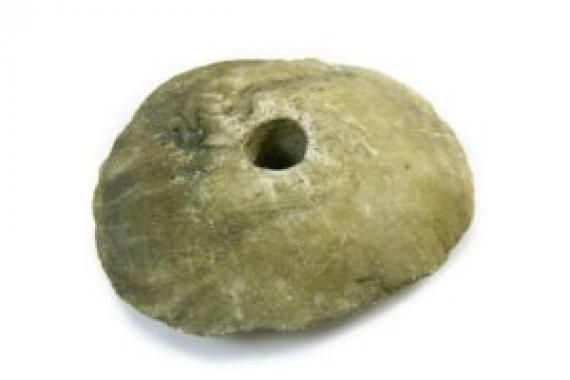However strange it may seem, the stone disc that is in the Museum is still used as a perfectly valid means of payment on the island of Yap, somewhere in Micronesia, in the middle of the Pacific Ocean. Tourists who visit the island are often astonished that the people of Yap just leave their “money” lying in the streets. Especially when it is not just small change! The largest stones have a diameter of 4 metres and can weigh up to 6 tonnes. But where lies the origin of this special kind of money?
Several centuries ago, some inhabitants of Yap sailed to the neighbouring island of Palau, about… 400 kilometres away and there they discovered a rather special rock: aragonite.
As this stone was not known on the island of Yap, they set about extracting massive pieces of it in the caves on Palau. They cut them into the form of discs with a hole pierced in their centre to put a stick into them, which made it possible to manoeuvre them using the same principle as the wheel. They then had to transport them back to the island of Yap with the help of bamboo rafts pulled by a canoe. After a while, the inhabitants of Yap came to use these discs as a means of payment and the stones were given the name rai.
However, the boat trip to Palau back then was strewn with obstacles. Many people got injured or even lost their lives on the way. Considering the risks incurred and in view of the number of victims, the value of these stones was actually increasing. Because of the danger the journey by boat involved and the scarcity of the raw material (aragonite), these stones became a very valuable commodity in the eyes of the people of Yap.
